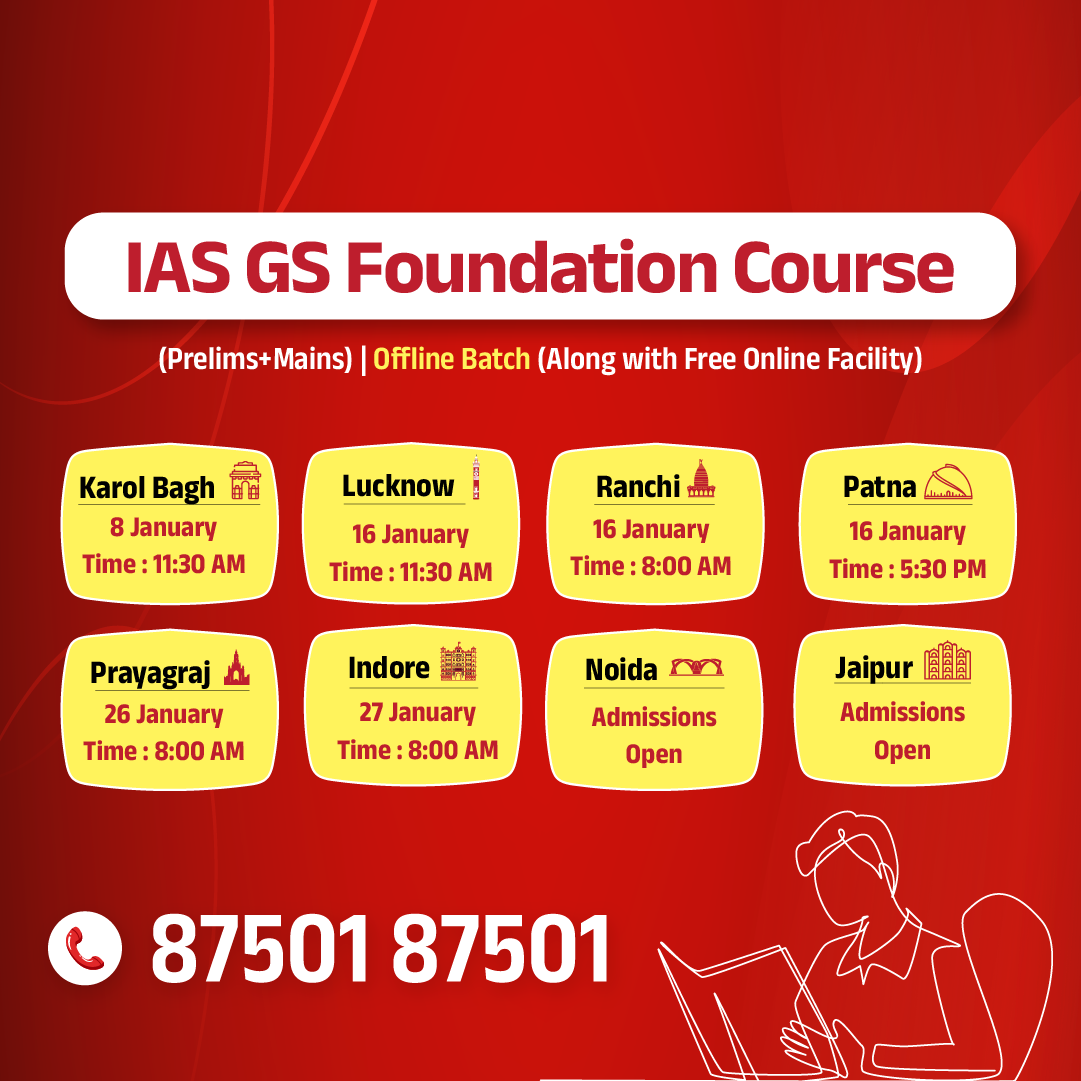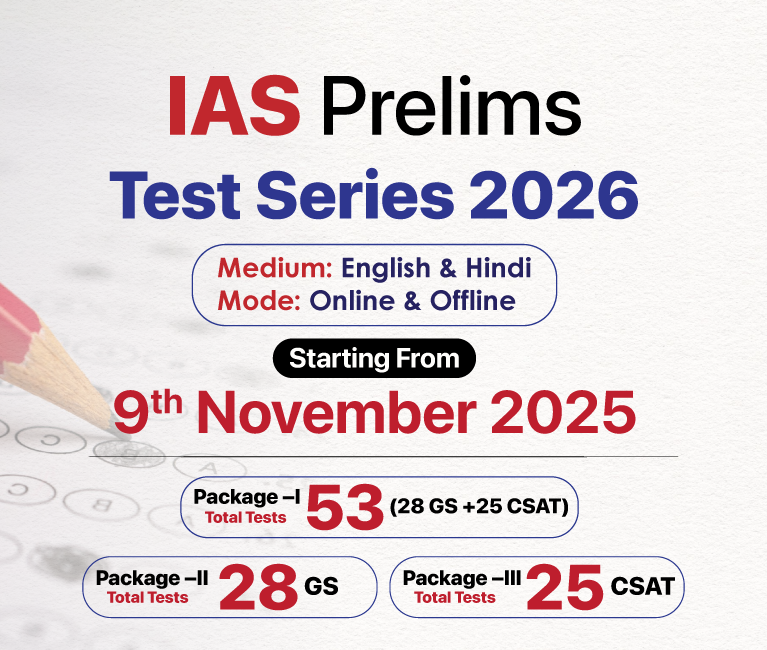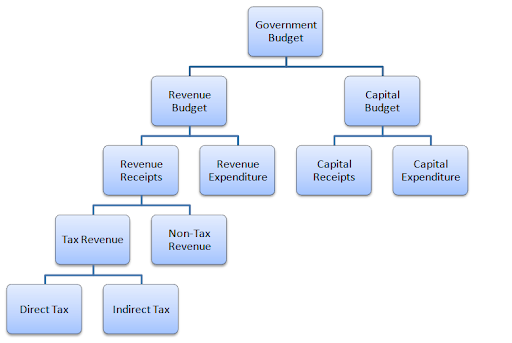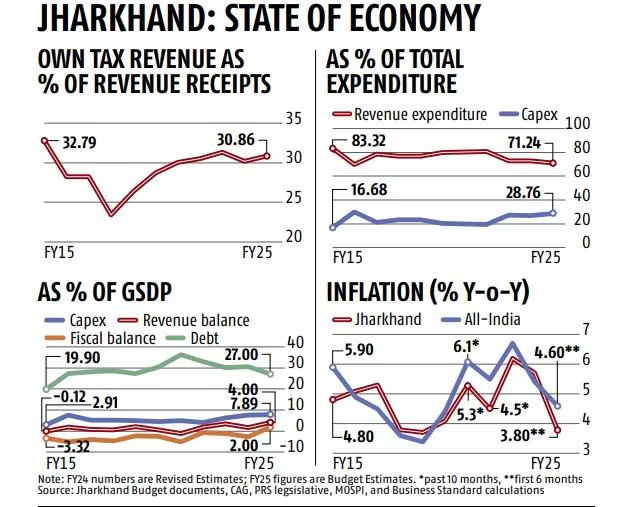Jharkhand Switch to Hindi
State’s Financial Landscape
Why in News?
Recently, the assembly election in Jharkhand has intensified, with both the ruling and opposition alliances launching economic initiatives aimed at garnering voter support.
Key Points
- Revenue Generation:
- Jharkhand generates only about 30.8% of its revenue receipts through its own tax collection, creating dependency on central government allocations.
- Pension Schemes:
- The state has expanded a universal pension scheme, reducing the age of eligibility from 60 to 50 for marginalized groups (Dalits, Adivasis, and women).
- The government supplements central pension funds, adding Rs. 240.4 crore to ensure that each recipient gets a monthly Rs. 1,000.
- Committed Expenditures:
- Salaries, pensions, and interest payments absorbed over one-third of Jharkhand’s revenue receipts in FY24, limiting fiscal flexibility for development projects.
- Capital Expenditure Focus:
- Jharkhand has prioritized capital expenditure, aiming to reach 7.89% of its GSDP in FY25, a substantial rise from 2.91% in FY15.
- The state’s capex-GSDP ratio is higher than many states, with a recent 7.57% in FY24, well above the national average of approximately 4.9%.
- Higher capex helps in creating assets that may boost long-term growth, despite current fiscal constraints.
- Fiscal Surplus and Debt Challenges
- Jharkhand has remained revenue-surplus for most years, except in FY15 and during the COVID-19 pandemic in FY21, maintaining a fiscal deficit of 2% (down from a high of 5.2% in FY21).
- Debt-to-GSDP Ratio:
- Jharkhand’s debt-to-GSDP ratio peaked at 36% in FY21 and remains high, projected at around 27% for FY25, though previous estimates have been revised upwards.
- The Reserve Bank of India ranked Jharkhand among the top 10 states with the highest debt-to-GSDP ratios, highlighting concerns over long-term debt sustainability.
- Economic Indicators and Social Challenges
- Unemployment: Jharkhand has a relatively low unemployment rate of 1.3% (2023-24), significantly below the national average of 3.2%.
- Poverty Levels: Jharkhand faces high multidimensional poverty, with 28% of residents experiencing deprivation, second only to Bihar (33.7%).
- Inflation:
- Overall Inflation: Declined to 3.8% in the first half of the financial year, below the national rate of 4.6%.
- Food Inflation: Rose to 8.9% in September, higher than the national 8.4%, while the average food inflation rate from April to September was 6.7%, still below the national trend.
- Conclusion: With the Jharkhand Assembly elections approaching, both the ruling coalition and opposition alliance are engaging in competitive social welfare and economic proposals to sway the electorate, amidst a backdrop of fiscal challenges, poverty, and inflationary pressures.


.png)




.jpg)























.png)


.jpg)

 PCS Parikshan
PCS Parikshan



